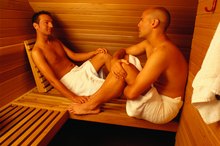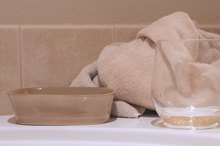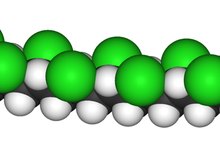What does fact checked mean?
At Healthfully, we strive to deliver objective content that is accurate and up-to-date. Our team periodically reviews articles in order to ensure content quality. The sources cited below consist of evidence from peer-reviewed journals, prominent medical organizations, academic associations, and government data.
- The American Journal of Medicine: Benefits and Risks of Sauna Bathing
- The Annals of Internal Medicine: Regular Sauna Bathing and the Incidence of Common Colds
- The Annals of Internal Medicine: Regular Sauna Bathing and the Incidence of Common Colds
- American Cancer Association: High Blood Pressure and Hot Tubs (Saunas)
The information contained on this site is for informational purposes only, and should not be used as a substitute for the advice of a professional health care provider. Please check with the appropriate physician regarding health questions and concerns. Although we strive to deliver accurate and up-to-date information, no guarantee to that effect is made.
The Effects of Sitting in the Sauna
A sauna is a type of heat bath that uses dry heat to create very high temperatures and induce heavy perspiration. Most saunas have interiors lined with wood that is usually cedar, although redwood or hemlock may also be used. They can be heated with small electric or wood-burning stoves with stones on top. You toss water on the stones or on the walls of the sauna to increase the humidity and make it more comfortable. Most saunas reach temperatures upwards of 180 degrees F, so you shouldn't stay in for more than 15 or 20 minutes.
Increased Circulation
The heat from the sauna increases your heart rate and causes your blood vessels to relax and dilate, allowing more blood to reach your arms, legs, hands and feet. The metabolic effect of a sauna is similar to that of strenuous exercise, although it does not have the same muscular or cardiovascular benefits as exercise.
Relaxation and Pain Relief
Saunas & Bronchitis
Learn More
The heat from the sauna causes your muscles to relax, which helps relieve stress. Stress reduction can also result from resting in a quiet place and letting your mind wander as your body starts to relax. Increased muscular relaxation can also help reduce pain. According to “The American Journal of Medicine,” regular sauna baths may help alleviate the pain and stiffness associated with arthritis and rheumatism as well as discomfort from pulled or strained muscles 1.
- The heat from the sauna causes your muscles to relax, which helps relieve stress.
Improved Respiration
If you suffer from asthma and chronic bronchitis, you can benefit from taking regular sauna baths. The heat dilates bronchial and nasal passages, allowing air to travel more freely. The heat and steam from the sauna also help to clear mucus from nasal and bronchial passages, which offers some relief to people with chronic sinusitis. A sauna bath might also make you feel better when you're stuffed up from a cold.
- If you suffer from asthma and chronic bronchitis, you can benefit from taking regular sauna baths.
- The heat and steam from the sauna also help to clear mucus from nasal and bronchial passages, which offers some relief to people with chronic sinusitis.
Improved Immunity
Do Infrared Saunas Work to Lose Weight?
Learn More
Taking regular sauna baths will not prevent all types of illness, but it might help reduce the number of colds you get and how long the colds last. A 1990 study reported in “The Annals of Internal Medicine” found that people who took regular sauna baths had statistically significantly fewer colds than a control group who didn't use saunas 2. A sauna's heat mimics a fever, which might help the body rid itself of some bacterial and fungal infections.
Clean Skin
When you sweat a lot, your pores open up and the sweat can rinse out dirt and impurities in your skin. A sauna can leave your skin feeling soft, clean and sometimes tingling. Cleaner pores may reduce acne outbreaks. To get their skin really clean, Finnish people use a loofah or brush while in the sauna to remove rough patches and dead skin cells.
- When you sweat a lot, your pores open up and the sweat can rinse out dirt and impurities in your skin.
Related Articles
References
- The American Journal of Medicine: Benefits and Risks of Sauna Bathing
- The Annals of Internal Medicine: Regular Sauna Bathing and the Incidence of Common Colds
- American Cancer Association: High Blood Pressure and Hot Tubs (Saunas)
- Health Services at Columbia: Go Ask Alice
- Joy Hussain and Marc Cohen, “Clinical Effects of Regular Dry Sauna Bathing: A Systematic Review,” Evidence-Based Complementary and Alternative Medicine, vol. 2018, Article ID 1857413, 30 pages, 2018. https://doi.org/10.1155/2018/1857413
- Margaret E. Sears, Kathleen J. Kerr, and Riina I. Bray, “Arsenic, Cadmium, Lead, and Mercury in Sweat: A Systematic Review,” Journal of Environmental and Public Health, vol. 2012, Article ID 184745, 10 pages, 2012. https://doi.org/10.1155/2012/184745.
- Stephen J. Genuis, Sanjay Beesoon, Detlef Birkholz, and Rebecca A. Lobo, “Human Excretion of Bisphenol A: Blood, Urine, and Sweat (BUS) Study,” Journal of Environmental and Public Health, vol. 2012, Article ID 185731, 10 pages, 2012. https://doi.org/10.1155/2012/185731.
- Beever, R. (2010). Do Far-infrared Saunas Have Cardiovascular Benefits in People with Type 2 Diabetes? Canadian Journal of Diabetes, 34(2), 113–118. doi:10.1016/s1499-2671(10)42007-9
- Beever R. (2009). Far-infrared saunas for treatment of cardiovascular risk factors: summary of published evidence. Canadian family physician Medecin de famille canadien, 55(7), 691–696. PMID: 19602651
- Crinnion WJ. (2011). Sauna as a valuable clinical tool for cardiovascular, autoimmune, toxicant-induced and other chronic health problems. Environmental Medicine.
- Dean, W. (1981). Effect of sweating. JAMA: The Journal of the American Medical Association, 246(6), 623–623
- Imamura, M., Biro, S., & Kihara, T. (2002). Repeated thermal therapy improves impaired vascular endothelial function in patients with coronary risk factors. ACC Current Journal Review, 11(2), 32. doi:10.1016/s1062-1458(02)00539-1
- Joy Hussain and Marc Cohen, “Clinical Effects of Regular Dry Sauna Bathing: A Systematic Review,” Evidence-Based Complementary and Alternative Medicine, vol. 2018, Article ID 1857413, 30 pages, 2018.
- Kunutsor, S. K., Laukkanen, T., & Laukkanen, J. A. (2017). Sauna bathing reduces the risk of respiratory diseases: a long-term prospective cohort study. European Journal of Epidemiology, 32(12), 1107–1111. doi:10.1007/s10654-017-0311-6
- Laukkanen, J. A., Laukkanen, T., & Kunutsor, S. K. (2018). Cardiovascular and Other Health Benefits of Sauna Bathing: A Review of the Evidence. Mayo Clinic Proceedings, 93(8), 1111–1121. doi:10.1016/j.mayocp.2018.04.008
- Laukkanen, T., Khan, H., Zaccardi, F., & Laukkanen, J. A. (2015). Association Between Sauna Bathing and Fatal Cardiovascular and All-Cause Mortality Events. JAMA Internal Medicine, 175(4), 542. doi:10.1001/jamainternmed.2014.8187
- Margaret E. Sears, Kathleen J. Kerr, and Riina I. Bray, “Arsenic, Cadmium, Lead, and Mercury in Sweat: A Systematic Review,” Journal of Environmental and Public Health, vol. 2012, Article ID 184745, 10 pages, 2012.
- Mero, A., Tornberg, J., Mäntykoski, M., & Puurtinen, R. (2015). Effects of far-infrared sauna bathing on recovery from strength and endurance training sessions in men. SpringerPlus, 4, 321. doi:10.1186/s40064-015-1093-5
- Oosterveld, F. G. J., Rasker, J. J., Floors, M., Landkroon, R., van Rennes, B., Zwijnenberg, J., … Koel, G. J. (2008). Infrared sauna in patients with rheumatoid arthritis and ankylosing spondylitis. Clinical Rheumatology, 28(1), 29–34. doi:10.1007/s10067-008-0977-y
- Shui, S., Wang, X., Chiang, J. Y., & Zheng, L. (2015). Far-infrared therapy for cardiovascular, autoimmune, and other chronic health problems: A systematic review. Experimental Biology and Medicine, 240(10), 1257–1265. doi:10.1177/1535370215573391
- Soejima, Y., Munemoto, T., Masuda, A., Uwatoko, Y., Miyata, M., & Tei, C. (2015). Effects of Waon Therapy on Chronic Fatigue Syndrome: A Pilot Study. Internal Medicine, 54(3), 333–338. doi:10.2169/internalmedicine.54.3042
- Stephen J. Genuis, Sanjay Beesoon, Detlef Birkholz, and Rebecca A. Lobo, “Human Excretion of Bisphenol A: Blood, Urine, and Sweat (BUS) Study,” Journal of Environmental and Public Health, vol. 2012, Article ID 185731, 10 pages, 2012.









